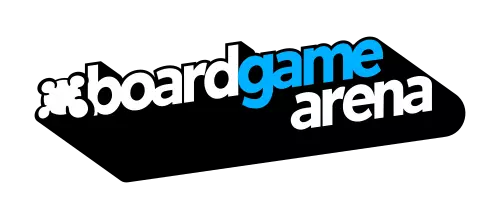Beginner
Your goal is to make your train start from a street (with number), pass through three stations (with letter), and finally arrive at the other street (number).
The tracks can be shared, and you can think about how to use your opponent to help you achieve your goal.
Sometimes, you need to make the train go back (for example, all your targets are on the left, except for one station on the right), and in this case, you can use a simple method like the one shown in the diagram to make the train use as few tracks as possible. Because the train itself cannot reverse. (This might mislead you with the animation effect of the dice's repair face, but in fact, the direction of the train's head always remains the same.)
In this example, after the train enters from the right library (station L), you can choose to go straight or take the reversing path through the museum (station M) to return to the library.
Advanced
Phase 1: Avoiding Blocks and Blocking Others
In the stage of placing tiles, each player places two tiles in turn. The tiles in your hand can not only help you connect more roads but also block your opponent's progress. Especially the green tiles, which cannot be covered, can force your opponent to wait until they reach a specific tile to be freed if used effectively.
This involves an important point on how to prevent (or at least delay and reduce) being blocked.
Tip: Hide Your Purpose
Yes, our goal is not to be known by the opponent, only through your actions during the game can the opponent guess your starting/ending point and the stations you need to pass through. My suggestion is not to start placing from your starting/ending point (number), as this will make it easy for the opponent to guess and block the number on the other side. A better approach is to first connect some stations.
Tip: Occupy advantageous stations
Before starting, first mention a detail you might not have noticed: the letters in your hand represent stations, and the letter representing the station is placed on the building before laying tracks next to it. Once tracks are built next to the building, the letter will move, and from then on, only that square is the station for that building.
From this, you can know that you can decide on which side of the building the station is opened by first placing tracks. This may be very important for your route planning. Similarly, you can also place irrelevant stations in hard-to-reach places to block your opponent.
Tip: Clever Use of Tracks
Standard tracks can be overlaid, as long as the overlaying track meets the condition of "not affecting the original path," while tracks with a green background represent that no other track can overlay it.
Cleverly utilizing tracks to make opponents spend more time connecting to their targets is something that those who enjoy Carcassonne should be familiar with.
Tip: Number of Stations
This might seem a bit esoteric (relying on luck), but it can be used in conjunction with Strategy Phase 2, specifically, it all depends on your luck.
We know that the H side of the die allows the train to reach the next station, while the tool side of the die allows you to return to the previous station.
Over a long stretch, would you prefer a dense network of stations, or fewer stations? The former means each H and each tool will only move you a short distance; the latter can sometimes allow you to move 6 or more spaces at once. Or, do you think you'll have a higher chance of using the H than the tool?
Phase 2: The tricks of statistics
In phase 2, you need to roll 3 dice per turn, then optionally roll 2 more, and then optionally roll the last one. After each roll, you must choose a die to execute. Each die has six sides: H, 1 green light, 2 green lights, red light, tool, and another tool.
| Number of rolls \ Result | At least one H appears | All are tools |
|---|---|---|
| 1st Roll | 42.1% (91/216) | 3.7% (1/27) |
| 2nd Roll | 30.6% (11/36) | 11.1% (1/9) |
| 3rd Roll | 16.7% (1/6) | 33% (1/3) |
According to the statistics, to put it simply, the risk of the first and second throws is low, but the risk of the third throw is relatively high. If the train is at a station, naturally throwing the third time won't lose anything, but if the train is on the way, making a third throw is not a sound idea. Of course, the decision is ultimately yours, whether to take a chance or prioritize stability.


